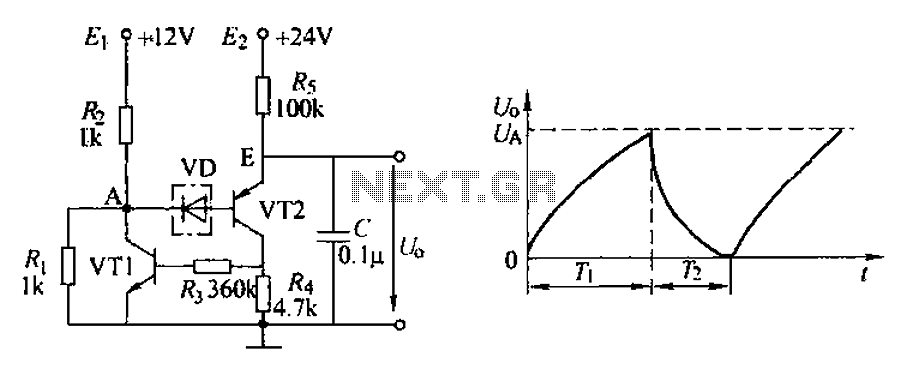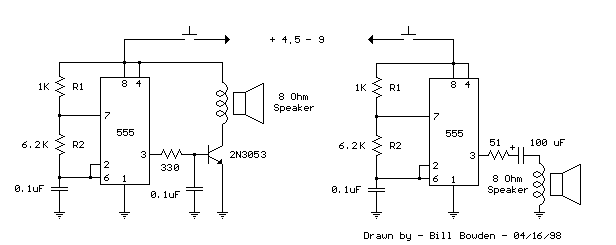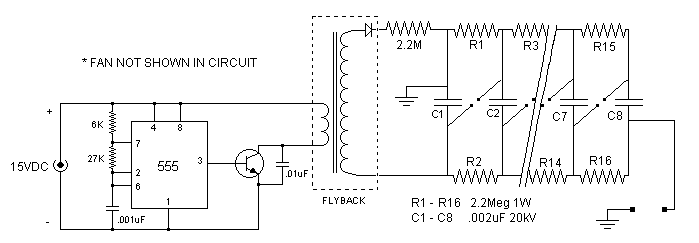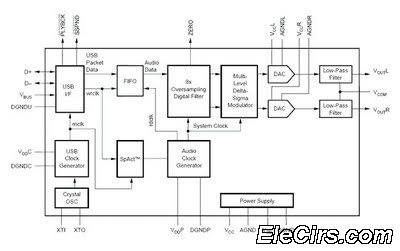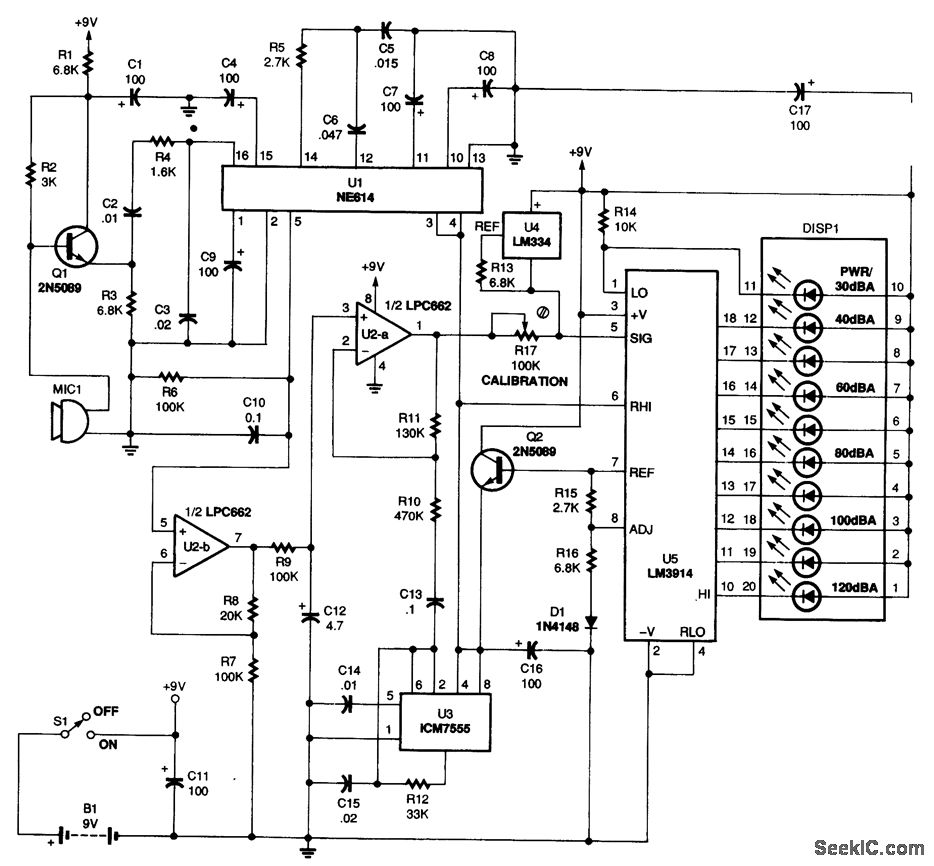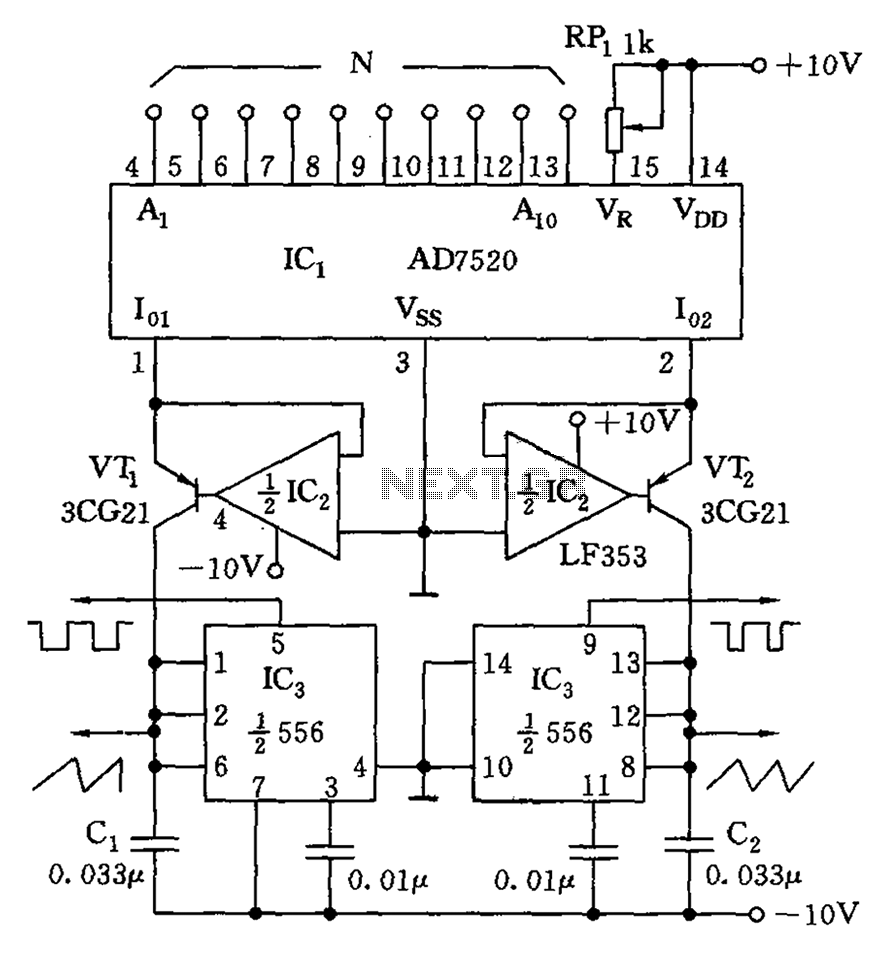
Sound effect generator

This waveshape generator functions as a slow-running oscillator with adjustable attack and decay times. It features a variable amplitude output, which is high impedance and can be controlled through a 2M potentiometer. Additionally, an add-on circuit is illustrated in section B, which is recommended for applications requiring a low impedance output. Several output waveforms that can be generated are depicted in section C.
The waveshape generator circuit utilizes a basic oscillator design, typically based on a 555 timer or similar IC, configured in an astable mode to produce periodic waveforms. The adjustable attack and decay parameters allow for fine-tuning of the waveform shape, making it suitable for various applications including sound synthesis and signal modulation.
The variable amplitude output is achieved through a 2M potentiometer, which allows the user to control the output voltage level. This high impedance output is ideal for interfacing with high impedance loads, such as amplifiers or analog inputs of microcontrollers. For applications that require a low impedance output, the add-on circuit provided in section B can be integrated. This circuit typically includes a buffer amplifier, such as an operational amplifier configured as a voltage follower, which effectively lowers the output impedance while maintaining the signal integrity.
The output waveforms produced by the generator can include sine, square, triangle, and sawtooth shapes, depending on the configuration and component values used in the oscillator circuit. The waveforms can be visualized in section C, illustrating the versatility of the generator for different signal processing tasks. The design may also include additional features such as frequency modulation or waveform shaping capabilities, enhancing its functionality in various electronic applications. Overall, this waveshape generator offers a flexible solution for generating a range of waveforms with adjustable characteristics.This waveshape generator is basically a slow running oscillator with variable attack and decay. A variable amplitude (high impedance) output is available via the 2M potentiometer. B shows an add-on circuit which should be used if a low impedance output is required Some of the output waveforms that can be produced are shown in C.
The waveshape generator circuit utilizes a basic oscillator design, typically based on a 555 timer or similar IC, configured in an astable mode to produce periodic waveforms. The adjustable attack and decay parameters allow for fine-tuning of the waveform shape, making it suitable for various applications including sound synthesis and signal modulation.
The variable amplitude output is achieved through a 2M potentiometer, which allows the user to control the output voltage level. This high impedance output is ideal for interfacing with high impedance loads, such as amplifiers or analog inputs of microcontrollers. For applications that require a low impedance output, the add-on circuit provided in section B can be integrated. This circuit typically includes a buffer amplifier, such as an operational amplifier configured as a voltage follower, which effectively lowers the output impedance while maintaining the signal integrity.
The output waveforms produced by the generator can include sine, square, triangle, and sawtooth shapes, depending on the configuration and component values used in the oscillator circuit. The waveforms can be visualized in section C, illustrating the versatility of the generator for different signal processing tasks. The design may also include additional features such as frequency modulation or waveform shaping capabilities, enhancing its functionality in various electronic applications. Overall, this waveshape generator offers a flexible solution for generating a range of waveforms with adjustable characteristics.This waveshape generator is basically a slow running oscillator with variable attack and decay. A variable amplitude (high impedance) output is available via the 2M potentiometer. B shows an add-on circuit which should be used if a low impedance output is required Some of the output waveforms that can be produced are shown in C.
